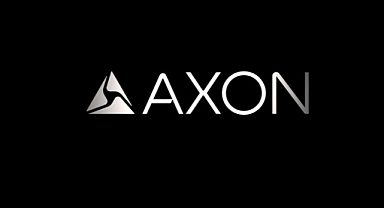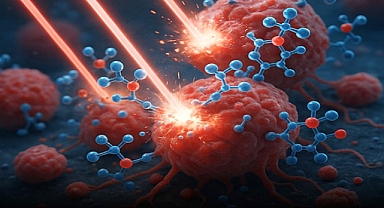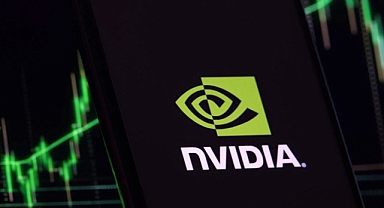FDA Announces Crackdown on Synthetic Food Dyes in Popular Snacks
The U.S. Food and Drug Administration (FDA) revealed a sweeping plan this week to eliminate petroleum-based synthetic food dyes from the American food supply by the end of 2026.At a press event held in Medford, Massachusetts, Health and Human Services Secretary Robert F. Kennedy Jr. and FDA Commissioner Marty Makary shared the agency’s intent to phase out artificial dyes commonly found in cereals, candies, snack foods, and beverages.“For the last 50 years, American children have increasingly been living in a toxic soup of synthetic chemicals,” said Makary. “This is an essential step toward reducing those exposures.”Synthetic Colors Under Scrutiny
Artificial dyes such as Red 40, Yellow 5 and 6, and Blue 1 and 2 are used to give processed foods their bright, appealing colors. These petroleum-derived additives have long been a staple of the food and beverage industry, favored for their cost-effectiveness and eye-catching appearance.However, consumer advocacy groups and some health researchers have raised concerns over potential health risks, particularly in children. A Lancet study cited by the FDA concluded that artificial food colorants may contribute to increased hyperactivity in children, intensifying calls for regulatory action.Industry-Wide Impact
Major food manufacturers including PepsiCo, General Mills, Mars, and WK Kellogg are among those affected. While there is currently no formal mandate, the FDA and food companies have reached what officials are calling “an understanding.”Makary emphasized a cooperative approach: “Let’s start in a friendly way. We don’t want to complicate this with congressional intervention unless we have to.” Still, the FDA is prepared to enforce compliance using available regulatory tools if necessary. The agency will begin the process of revoking authorizations for these synthetic colorings in the coming weeks and has set a deadline of late 2026 to eliminate the six remaining synthetic dyes from food products.Push for Natural Alternatives
The FDA is urging companies to transition to natural dyes such as beet juice, watermelon juice, and carrot extract. These alternatives can replicate some of the hues currently achieved with synthetic dyes, albeit often at higher production costs and less visual vibrancy. To aid this shift, the FDA plans to authorize four new natural color additives in the coming weeks and expedite the review process for others.While some companies have previously removed artificial dyes voluntarily—like Kraft Heinz in 2015—consumer backlash has occasionally reversed these changes. General Mills, for example, reintroduced artificially colored Trix cereal in 2017 after lackluster feedback on its naturally dyed version.A Broader Agenda on Health
Kennedy, who now oversees a $1.7 trillion federal health apparatus, has made removing harmful chemicals from food a cornerstone of his “Make America Healthy Again” campaign. He believes that a corrupt alignment between regulators and the food and pharmaceutical industries has led to a nationwide health crisis.“This isn’t a silver bullet,” Makary acknowledged. “But removing petroleum-based dyes is a meaningful step in combating chronic disease, especially in children.”Kennedy has also led broader cuts across HHS, reducing staff and consolidating departments. Some efforts, like suspending quality control for dairy testing, have drawn criticism. But Kennedy maintains that prioritizing food safety and nutrition reform is essential.Reformulation Already Underway
For companies, reformulating recipes without artificial dyes presents both a challenge and an opportunity. Natural colorants are more expensive and often require more volume to produce the same visual appeal, but demand for cleaner labels is rising.McCormick, a company that works with manufacturers to reformulate products, is already seeing an uptick in demand for dye- and sodium-reduction solutions. “We’ve always been in the reformulation business, but now we’re seeing more urgency,” said CEO Brendan Foley during a recent earnings call.Although the full impact on consumer perception and purchasing habits remains uncertain, the FDA’s actions represent a clear shift toward prioritizing natural ingredients in the U.S. food system.
The U.S. Food and Drug Administration (FDA) revealed a sweeping plan this week to eliminate petroleum-based synthetic food dyes from the American food supply by the end of 2026.At a press event held in Medford, Massachusetts, Health and Human Services Secretary Robert F. Kennedy Jr. and FDA Commissioner Marty Makary shared the agency’s intent to phase out artificial dyes commonly found in cereals, candies, snack foods, and beverages.“For the last 50 years, American children have increasingly been living in a toxic soup of synthetic chemicals,” said Makary. “This is an essential step toward reducing those exposures.”Synthetic Colors Under Scrutiny
Artificial dyes such as Red 40, Yellow 5 and 6, and Blue 1 and 2 are used to give processed foods their bright, appealing colors. These petroleum-derived additives have long been a staple of the food and beverage industry, favored for their cost-effectiveness and eye-catching appearance.However, consumer advocacy groups and some health researchers have raised concerns over potential health risks, particularly in children. A Lancet study cited by the FDA concluded that artificial food colorants may contribute to increased hyperactivity in children, intensifying calls for regulatory action.Industry-Wide Impact
Major food manufacturers including PepsiCo, General Mills, Mars, and WK Kellogg are among those affected. While there is currently no formal mandate, the FDA and food companies have reached what officials are calling “an understanding.”Makary emphasized a cooperative approach: “Let’s start in a friendly way. We don’t want to complicate this with congressional intervention unless we have to.” Still, the FDA is prepared to enforce compliance using available regulatory tools if necessary. The agency will begin the process of revoking authorizations for these synthetic colorings in the coming weeks and has set a deadline of late 2026 to eliminate the six remaining synthetic dyes from food products.Push for Natural Alternatives
The FDA is urging companies to transition to natural dyes such as beet juice, watermelon juice, and carrot extract. These alternatives can replicate some of the hues currently achieved with synthetic dyes, albeit often at higher production costs and less visual vibrancy. To aid this shift, the FDA plans to authorize four new natural color additives in the coming weeks and expedite the review process for others.While some companies have previously removed artificial dyes voluntarily—like Kraft Heinz in 2015—consumer backlash has occasionally reversed these changes. General Mills, for example, reintroduced artificially colored Trix cereal in 2017 after lackluster feedback on its naturally dyed version.A Broader Agenda on Health
Kennedy, who now oversees a $1.7 trillion federal health apparatus, has made removing harmful chemicals from food a cornerstone of his “Make America Healthy Again” campaign. He believes that a corrupt alignment between regulators and the food and pharmaceutical industries has led to a nationwide health crisis.“This isn’t a silver bullet,” Makary acknowledged. “But removing petroleum-based dyes is a meaningful step in combating chronic disease, especially in children.”Kennedy has also led broader cuts across HHS, reducing staff and consolidating departments. Some efforts, like suspending quality control for dairy testing, have drawn criticism. But Kennedy maintains that prioritizing food safety and nutrition reform is essential.Reformulation Already Underway
For companies, reformulating recipes without artificial dyes presents both a challenge and an opportunity. Natural colorants are more expensive and often require more volume to produce the same visual appeal, but demand for cleaner labels is rising.McCormick, a company that works with manufacturers to reformulate products, is already seeing an uptick in demand for dye- and sodium-reduction solutions. “We’ve always been in the reformulation business, but now we’re seeing more urgency,” said CEO Brendan Foley during a recent earnings call.Although the full impact on consumer perception and purchasing habits remains uncertain, the FDA’s actions represent a clear shift toward prioritizing natural ingredients in the U.S. food system.









